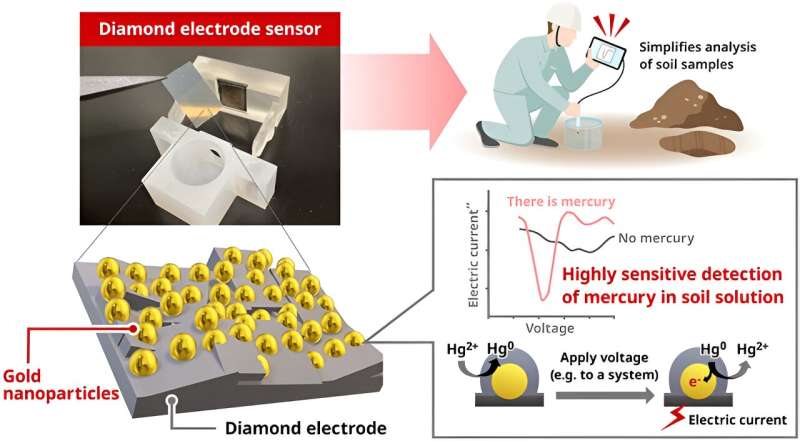
Environmental pollution by heavy
metals is a major social problem. Among these metals, mercury (Hg) is strictly
controlled due to its high toxicity. Focusing on soil, which is closely related
to our daily lives, the environmental standard for mercury is set at less than
0.5 µg/L (µg is a unit of 1 millionth of a gram).
Testing based on such official standards is mandatory for former factory sites with high potential for contamination. Most construction sites and land transfers, etc., are tested for soil contamination on a voluntary basis to confirm safety. Currently, samples must be transported from the site to specialized testing centers and analyzed for heavy metals using large testing equipment. The analysis also requires specialized knowledge and complex procedures.
If Hg testing of soil does not require specialized knowledge and could be performed on-site by anyone, it would reduce the time required for safety confirmation at many sites that voluntarily test for Hg, shorten the time required to start construction and reduce the burden on the site. In addition, if inexpensive testing methods for Hg become widely available, daily monitoring will make it possible to confirm the safety of drinking water in areas where groundwater is consumed.
Researchers at AIST, in collaboration with Sakamoto Lime Industry Co., Ltd. have developed such a method to detect trace amounts of Hg in the soil. Their research is published in the journal Nanomaterials.
Environmental pollution by Hg and other heavy metals is strictly controlled worldwide. In Japan, numerous standard values have been established for a range of Hg-related parameters, including soil Hg levels and waste management. These measures are aimed at mitigating the health risks associated with Hg exposure.
This newly developed technology enables the detection of Hg in solution without complicated procedures using an easily portable device by means of an electrochemical Hg measurement technique.
Although electrochemical measurement is easily affected by impurities in the solution (hereafter referred to as "foreign substances") that interfere with the measurement, the unique data processing and analysis enables the determination of whether Hg is contained at a concentration of 0.5 ppb (ppb is one billionth) or higher even in soil test solutions containing a large amount of foreign substances.
In the future, the researchers expect to develop a soil analysis system that can be used by anyone on the spot.

 Previous page
Previous page Back to top
Back to top







